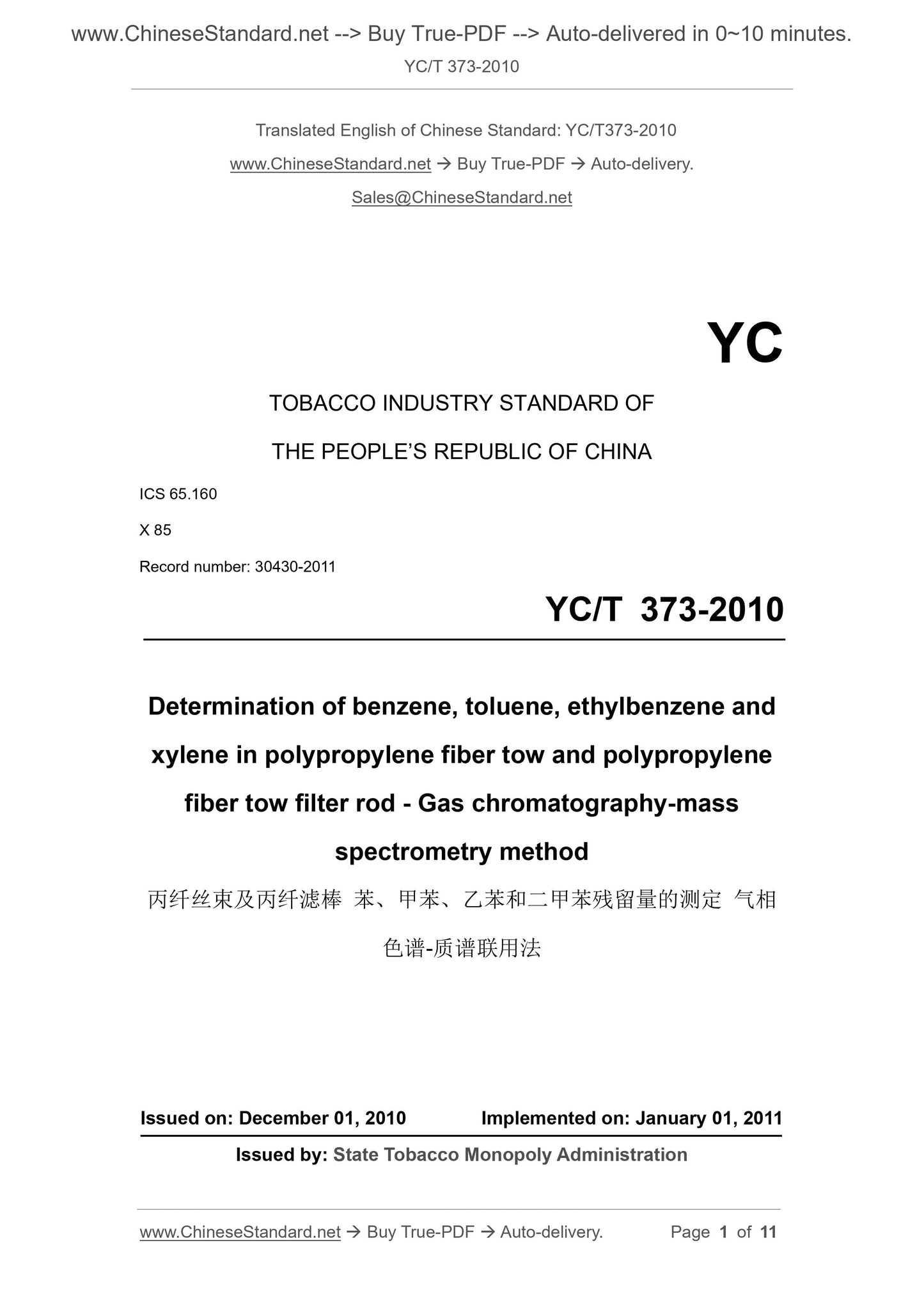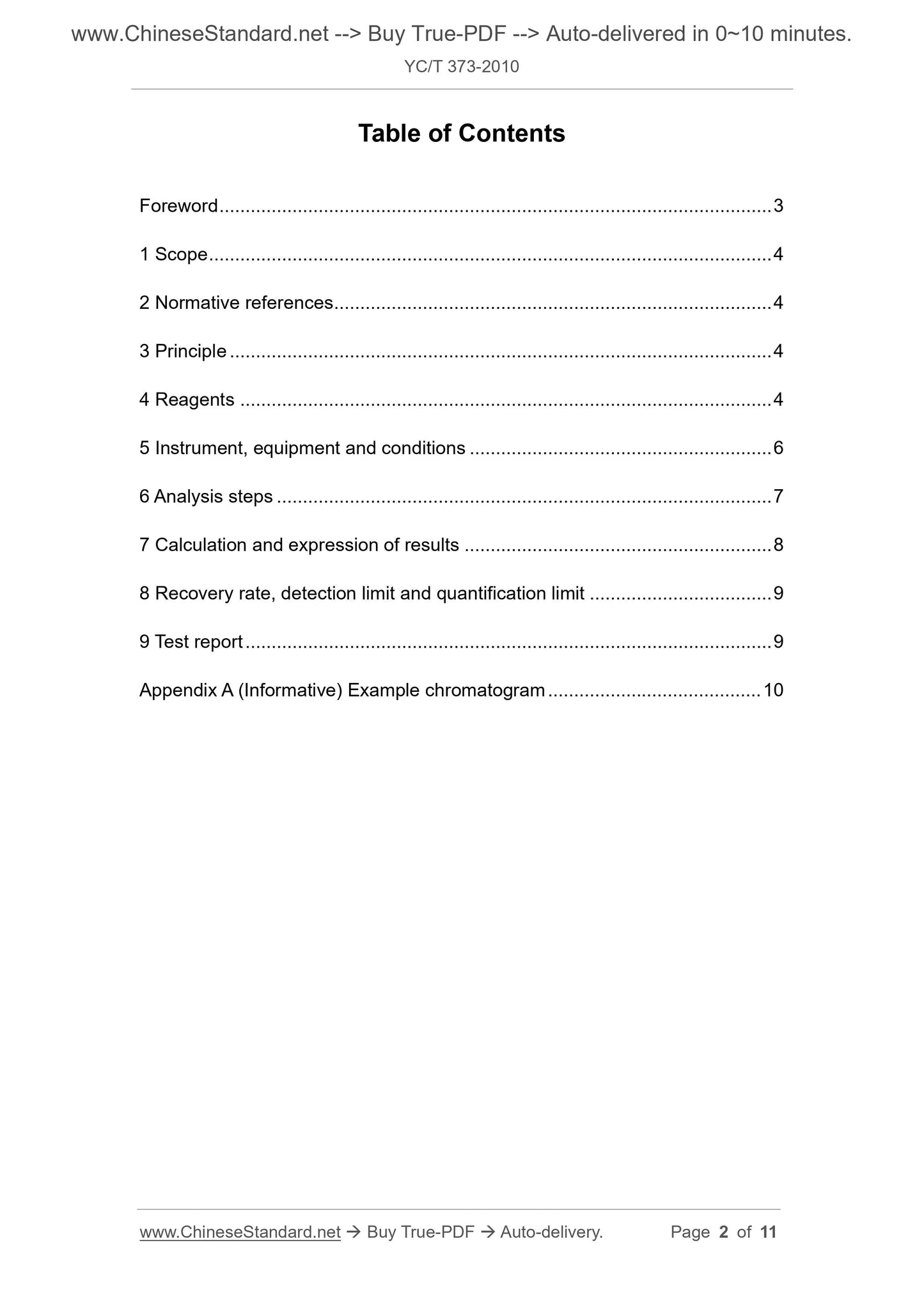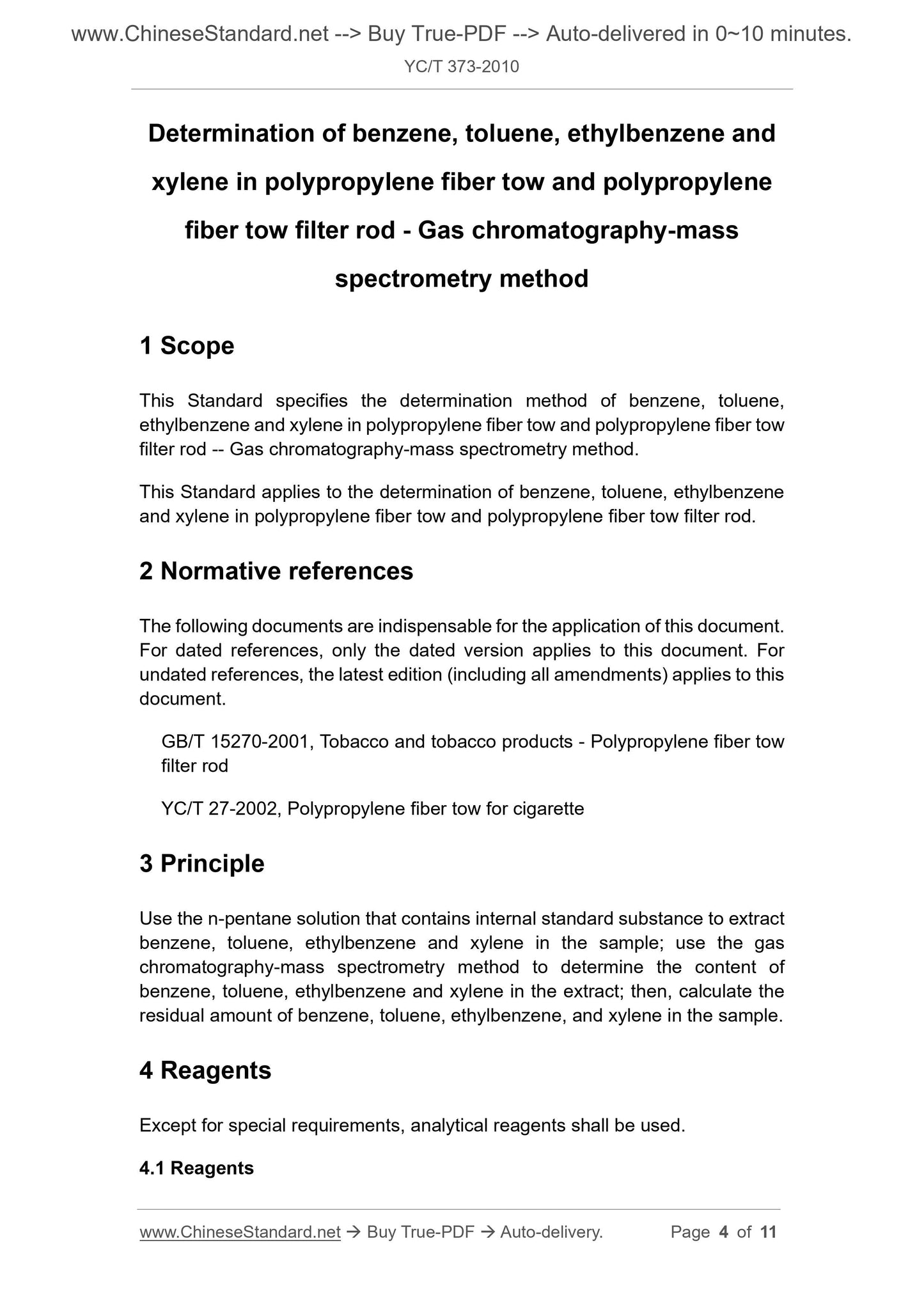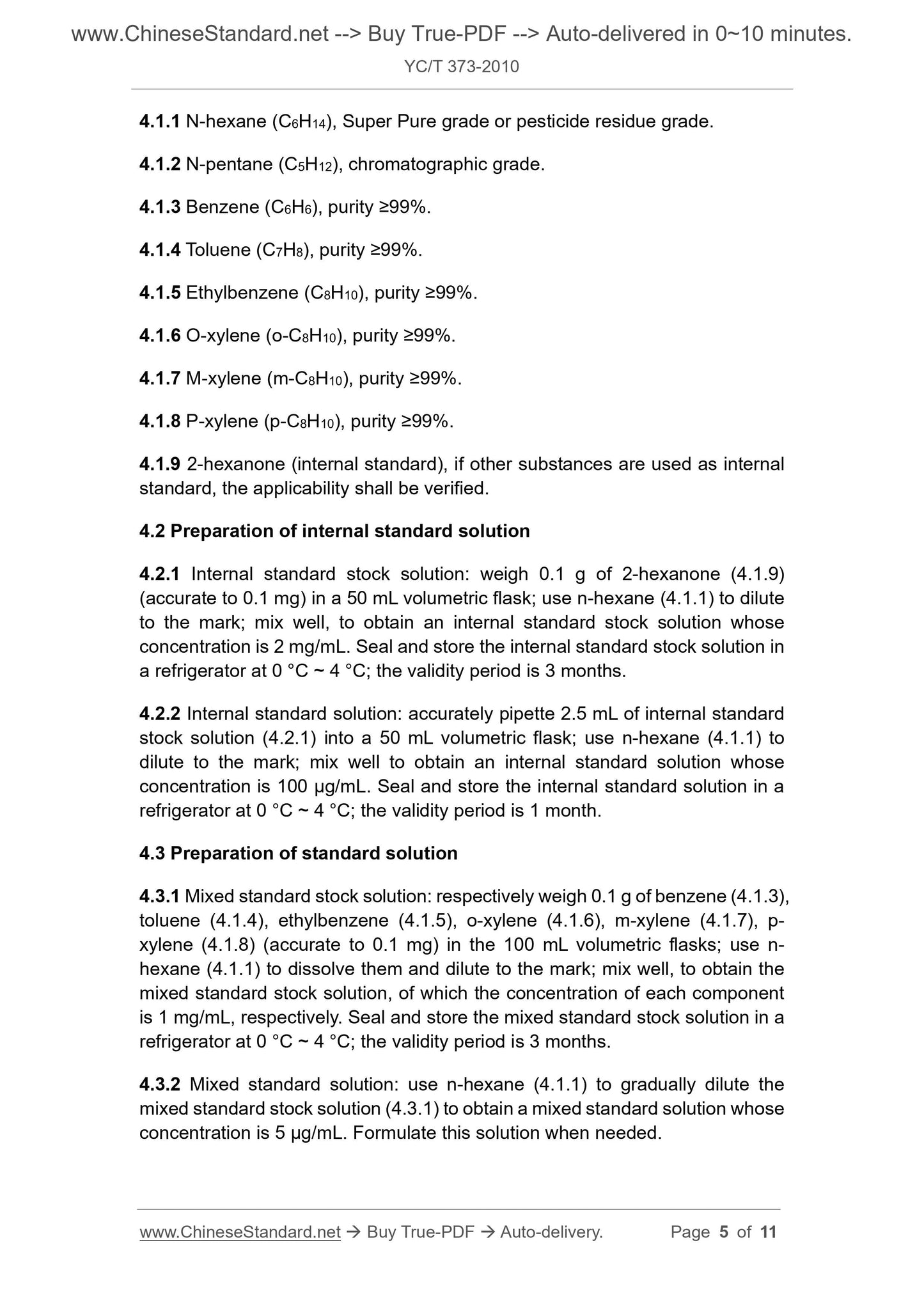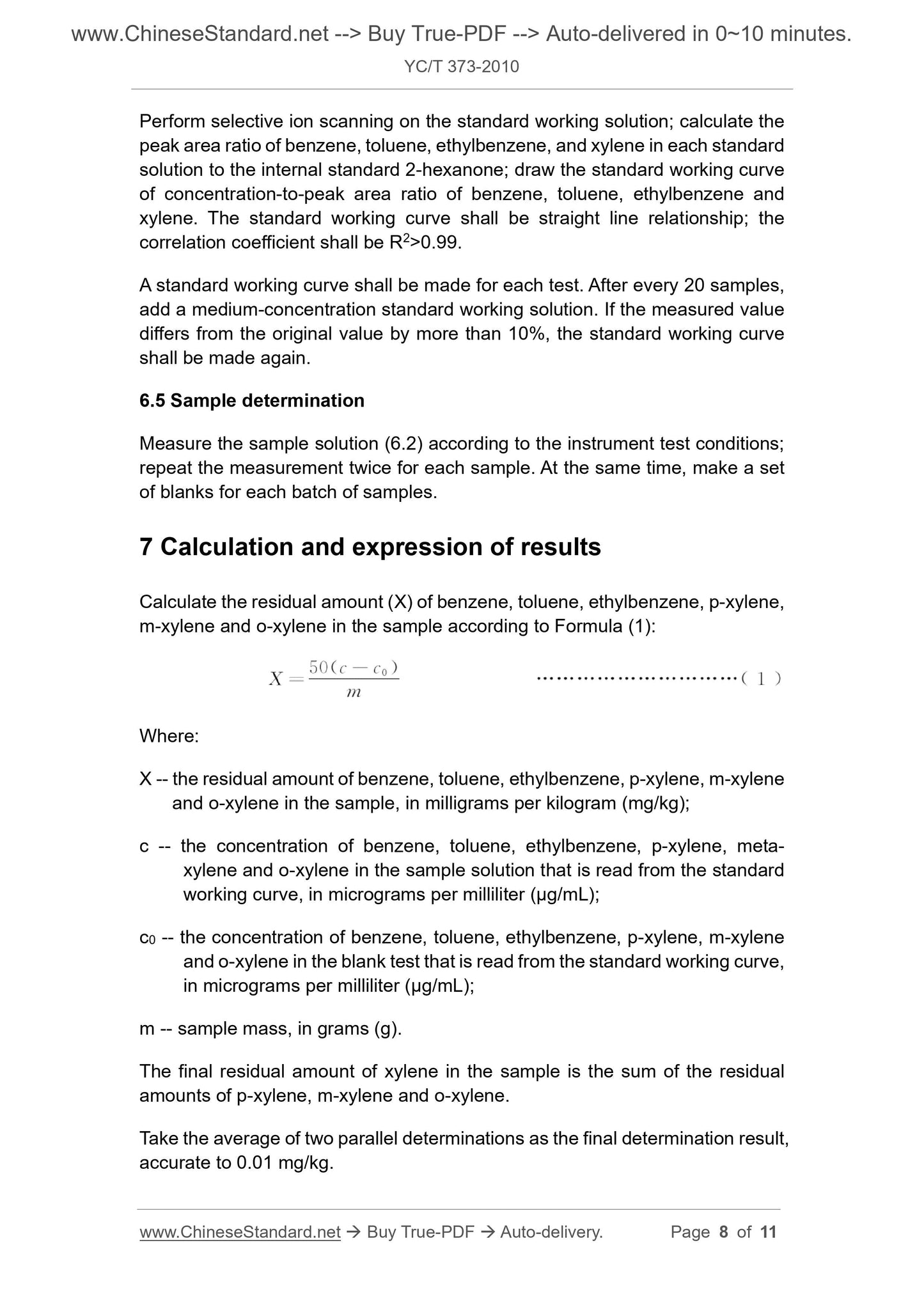1
/
of
5
www.ChineseStandard.us -- Field Test Asia Pte. Ltd.
YC/T 373-2010 English PDF (YC/T373-2010)
YC/T 373-2010 English PDF (YC/T373-2010)
Regular price
$145.00
Regular price
Sale price
$145.00
Unit price
/
per
Shipping calculated at checkout.
Couldn't load pickup availability
YC/T 373-2010: Determination of benzene, toluene, ethylbenzene and xylene in polypropylene fiber tow and polypropylene fiber tow filter rod - Gas chromatography-mass spectrometry method
Delivery: 9 seconds. Download (and Email) true-PDF + Invoice.Get Quotation: Click YC/T 373-2010 (Self-service in 1-minute)
Newer / historical versions: YC/T 373-2010
Preview True-PDF
Scope
This Standard specifies the determination method of benzene, toluene,ethylbenzene and xylene in polypropylene fiber tow and polypropylene fiber tow
filter rod -- Gas chromatography-mass spectrometry method.
This Standard applies to the determination of benzene, toluene, ethylbenzene
and xylene in polypropylene fiber tow and polypropylene fiber tow filter rod.
Basic Data
| Standard ID | YC/T 373-2010 (YC/T373-2010) |
| Description (Translated English) | Determination of benzene, toluene, ethylbenzene and xylene in polypropylene fiber tow and polypropylene fiber tow filter rod - Gas chromatography-mass spectrometry method |
| Sector / Industry | Tobacco Industry Standard (Recommended) |
| Classification of Chinese Standard | X85 |
| Classification of International Standard | 65.160 |
| Word Count Estimation | 9,990 |
| Date of Issue | 2010-12-01 |
| Date of Implementation | 2011-01-01 |
| Quoted Standard | GB/T 15270-2001; YC/T 27-2002 |
| Regulation (derived from) | National Tobacco Science (2010) 414 |
| Issuing agency(ies) | State Tobacco Monopoly Administration |
| Summary | This standard specifies the C and C -fiber filter rod filament bundles of benzene, toluene, ethylbenzene and xylene residues method gas, chromatography mass spectrometry. This standard applies to C and C -fiber filter rod filament bundles of benzene, toluene, ethylbenzene and xylene residues. |
Share
